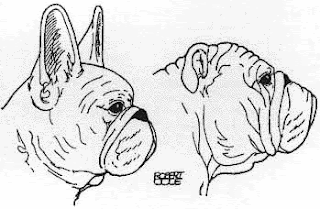Summer is my favorite time
of the year but many summertime activities can be dangerous to your pet’s
health. By far the most common
threat is the risk of overheating. At Friendship we see so many cases of heat
stroke every summer I feel it is necessary to revisit my annual hot weather
warning.
Dogs are much more
susceptible to heatstroke than their human companions are. As if wearing thick
fur coats weren’t enough of a challenge, dogs have only two ways of dissipating
heat: by panting, and through their paw pads. When the temperature rises, neither of these cool-down
tricks works too well: Panting becomes much less effective when the weather is
hot and humid. And when your dog walks on a scorching sidewalk his paws stay
too hot to help him cool down.
If you’re out on a walk
with your dog and he suddenly lies down, collapses or becomes unresponsive,
seek veterinary care immediately. DO NOT try to cool down your dog on your own.
Instead, get to a vet as quickly as possible.
All dogs can be affected
but the “Smushy-faced” (“brachycephalic” is the technical term!) dogs like
bulldogs and pugs are especially susceptible to heat-related illness. This is
because breed characteristics such as narrow nostrils and elongated soft
palates decrease their ability to effectively cool themselves. Please keep this in mind if you have a
brachycephalic breed at home.
 |
| Photo credit: Robert Cole |
If for some reason you
can’t make it to a veterinary hospital immediately there are a few cooling
measures you can begin. Fist take
your dog’s temperature rectally with a digital thermometer, normal is
100-102. You can then soak a towel
in tepid (not cold) water, place it over your dog, and aim a fan at him. Continue to closely monitor his
temperature and once it hits 103 degrees discontinue cooling. Even if your dog seems fine you should
take him to a veterinarian as soon as he is more stable.
What makes heat stroke
potentially fatal is that the patient can develop a condition called
disseminated intravascular coagulation or DIC that causes massive and
widespread damage to the blood vessels.
This quickly results in multiple organ failure and the patient loses the
ability to clot his blood.
Treatment consists of aggressive supportive care and plasma transfusions,
both of which are very expensive and not guaranteed to prevent death.
When it comes to heat stroke, the best treatment is prevention. Here are some commonsense tips to help keep your dog cool and comfortable:
1. Avoid taking your dog out during the hottest times of the day. (Quick rule of thumb: If it is too hot for you, then it is definitely too hot for your dog!)
1. Avoid taking your dog out during the hottest times of the day. (Quick rule of thumb: If it is too hot for you, then it is definitely too hot for your dog!)
·
Keep an eye
out for unusual behavior: If you are out in the hot weather with your dog and
he slows down, lies down or acts reluctant to keep walking, you should let him
rest, offer him cool water and head inside immediately.
·
Make sure your
dog has cool, fresh water available at all times.
·
Never leave a
dog (or any other pet) in a parked car when it is even slightly warm out. The temperature in the car can rise
amazingly quickly and before you know it you have an overheated animal.
·
Don’t take your dog running. (I am never
a fan of running with your dog—check out this article to see why--but in this
weather it is an especially bad idea).
| Poppy and Sparkle enjoying some beach time |








No comments:
Post a Comment